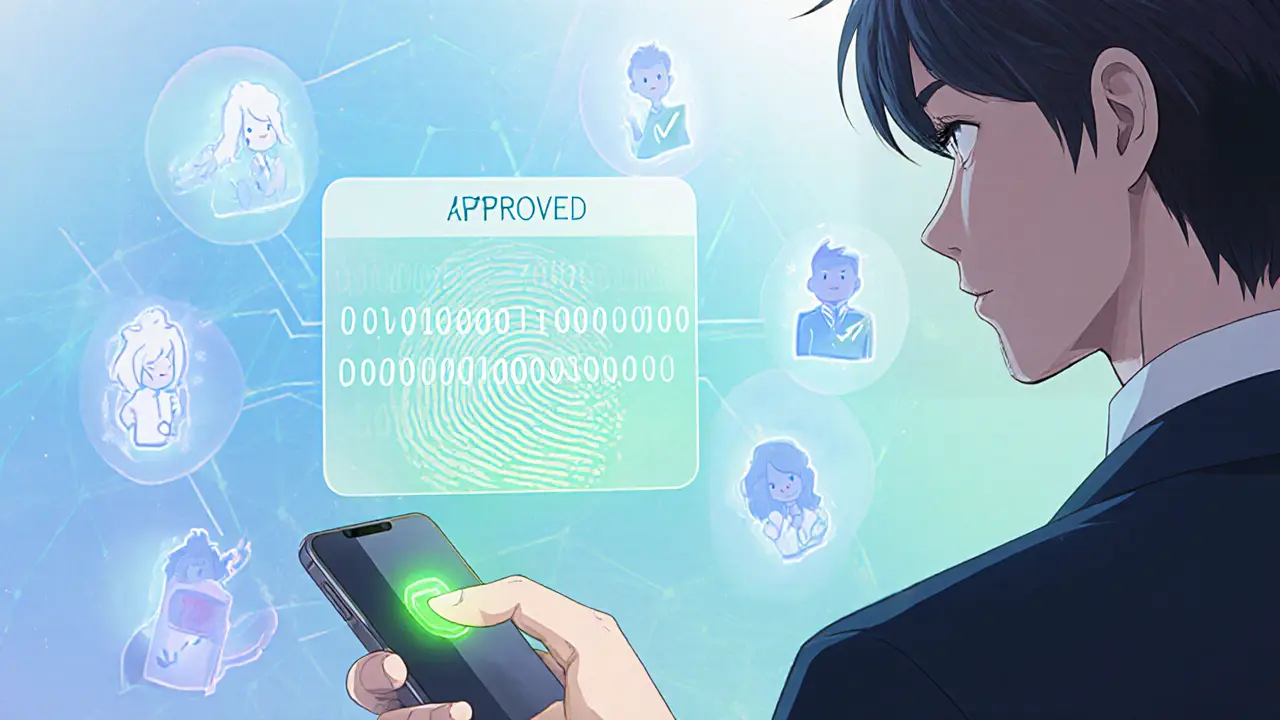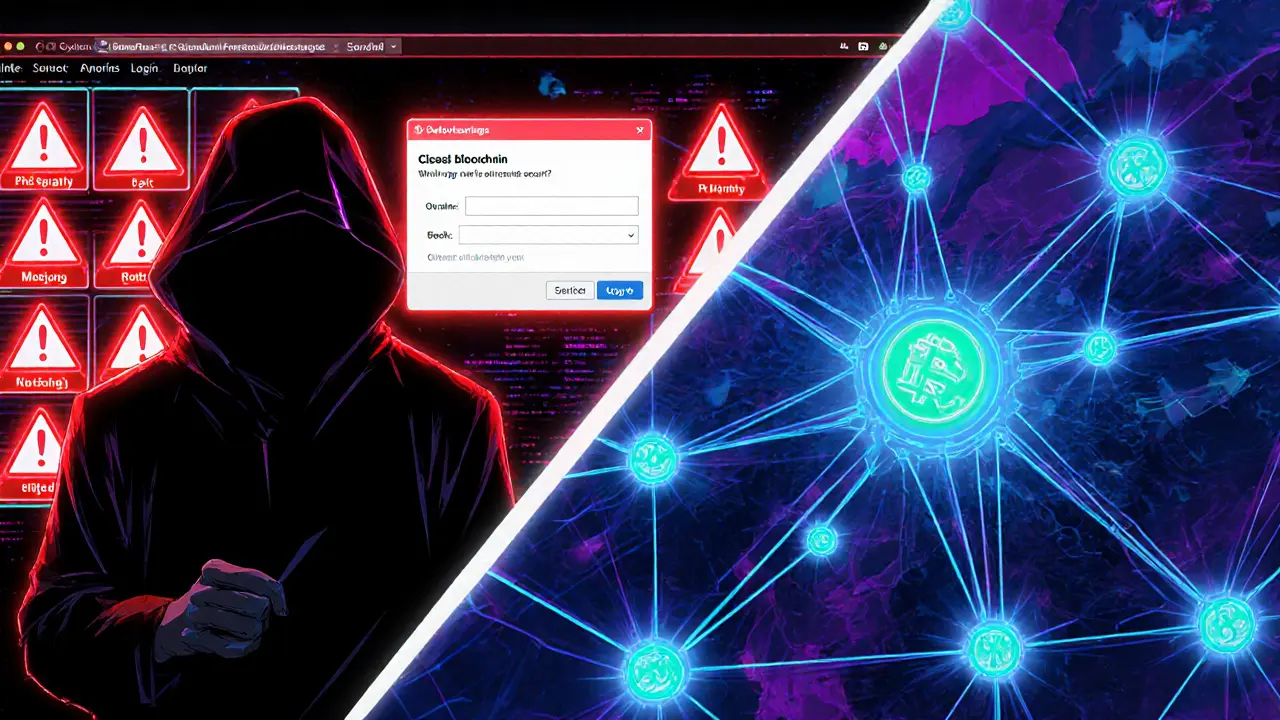BidiPass (BDP) Token Value Calculator
Current BDP Token Metrics
Token Standard: ERC-20 (Ethereum)
Circulating Supply: 386,631,337 BDP
Market Cap: $27,104 USD
Current Price Range: $0.000200 – $0.000275 per BDP
24-Hour Volume: ~$1,200 (low liquidity)
Your BDP Investment Analysis
Holdings: BDP
Valuation Scenario:
Potential Value:
Projected Return:
Note: These calculations are estimates based on current market data. Actual values may vary significantly due to market volatility and adoption rates.
Two-Layer Security
Combines biometric verification with HOTP codes and blockchain consensus for enhanced security.
Decentralized Verification
Eliminates single points of failure by distributing authentication across a blockchain network.
Utility Token Model
BDP serves as both network fee payment and incentive for node operators.
Ever wondered why traditional login screens still get hacked despite two‑factor codes and passwords? The answer lies in a single point of failure - the server that validates the code. BidiPass tries to erase that weak spot by pushing authentication onto a blockchain, turning every approval into a peer‑to‑peer vote.
What is BidiPass (BDP)?
BidiPass is a blockchain‑based identity authentication protocol that also issues an ERC‑20 cryptocurrency called BDP. The token lives on the Ethereum network, leveraging its smart‑contract capabilities to record every authorization request on an immutable ledger.
How the Two‑Layer Security Works
The platform mixes three proven security concepts:
- Blockchain verification: Each approval request is written to the BidiPass blockchain, stamping the exact time, user ID and action metadata.
- HOTP algorithm: A HMAC‑based One‑time Password (HOTP) is generated on the user’s device. Because HOTP is counter‑based, the same secret can produce a new code every time the user presses “approve”.
- Biometric lock: Before the HOTP is sent, the mobile app demands a fingerprint or facial scan, ensuring the person holding the device is the rightful owner.
All three steps must succeed before the network marks the request as "confirmed". This peer‑to‑peer validation eliminates a single point of compromise - a hacker would need to hijack both the user’s device and a majority of network nodes.
Core Components of the BidiPass Ecosystem
- Proprietary blockchain: Stores Authorization Requests, timestamps, OTP codes and decline reasons.
- Software Development Kit (SDK): Lets fintech firms embed BidiPass into their web or mobile apps with a few lines of code.
- Mobile applications for Android and iOS that handle biometric capture, HOTP generation and token signing.

Token Economics at a Glance
| Metric | Value |
|---|---|
| Token Standard | ERC‑20 (Ethereum) |
| Circulating Supply | 386,631,337 BDP |
| Market Capitalization | $27,104 USD (CoinMarketCap) |
| Current Price Range | $0.000200 - $0.000275 per BDP |
| 24‑Hour Volume | ~$1,200 (low liquidity) |
| Technical Indicators | SMA $0.000571, Bollinger Bands $0.00108 / $0.0000570 |
Where BidiPass Fits in the Identity Landscape
Traditional KYC (Know Your Customer) checks rely on centralized databases and static documents. BidiPass turns the process into a live, cryptographically signed event. Companies that need to authorize high‑value trades, crypto withdrawals, or regulatory‑sensitive actions can embed the SDK and demand a BidiPass approval instead of a paper‑based form.
Key sectors that could benefit:
- Cryptocurrency exchanges seeking tamper‑proof withdrawal approvals.
- Fintech lenders that must verify borrower identity before disbursing funds.
- Enterprise SaaS platforms handling confidential client data.
Pros, Cons, and Real‑World Challenges
Advantages
- Decentralized verification reduces the risk of a single server breach.
- Biometric link ties the OTP to a physical person, mitigating phishing attacks.
- ERC‑20 token provides a built‑in incentive model for node operators.
Drawbacks
- Low market cap ($27K) signals limited adoption and liquidity.
- Integration requires developers comfortable with blockchain SDKs, raising the learning curve.
- Regulatory clarity around crypto‑backed identity solutions is still evolving in many jurisdictions.

How to Obtain BDP Tokens
If you want to experiment with the platform, you’ll need a wallet that supports ERC‑20 tokens - MetaMask, Trust Wallet or hardware wallets like Ledger work fine. Once the wallet is set up, you can purchase BDP on the few decentralized exchanges that list it (e.g., Uniswap V3). Always double‑check the contract address from the official whitepaper to avoid scams.
Future Outlook and Price Predictions
Analysts on CoinLore project a short‑term dip to $0.0000137 but a bullish long‑term target of $0.0230 by the end of 2025 - a 16,700% upside from today’s price. Those forecasts hinge on two assumptions:
- Enterprise adoption picks up, driving token demand for network fees.
- Regulators accept blockchain‑based KYC as a compliant alternative to legacy methods.
Given the current ranking (#3381 on CoinMarketCap) and modest trading volume, hitting the $0.0230 mark would require a sizable partnership, perhaps with a major exchange or a fintech consortium. Until that materializes, treat price forecasts as speculative.
Quick Takeaways
- BidiPass is a blockchain‑powered identity authentication protocol that also issues the BDP ERC‑20 token.
- Its two‑layer security combines HOTP codes, biometric checks and peer‑to‑peer blockchain verification.
- The token’s market cap sits at just $27K, indicating early‑stage adoption.
- Target users are businesses needing stronger KYC, not everyday retail crypto traders.
- Price outlook is highly speculative; potential upside exists if enterprise integrations grow.
Frequently Asked Questions
What problem does BidiPass aim to solve?
It removes the single point of failure in traditional authentication by storing approval requests on a decentralized ledger and requiring both a biometric check and an HOTP code.
Is BDP a utility token or a security?
BidiPass markets BDP as a utility token used to pay for network fees and incentivize node operators. No formal securities registration has been announced.
Can I use BDP for everyday purchases?
Not really. Its primary use‑case is within the BidiPass authentication network. Retail acceptance is minimal due to low liquidity and price volatility.
How secure is the HOTP algorithm?
HOTP is a well‑established standard (RFC 4226). It generates one‑time passwords based on a shared secret and a counter, making it resistant to replay attacks when paired with biometric verification.
Where can I find the BidiPass SDK?
The SDK is hosted on the project's GitHub repository, linked from the whitepaper. It includes libraries for JavaScript, Java, and Swift to speed up integration.


7 Responses
Hey folks! BidiPass looks like a solid step toward cutting out that pesky single‑point‑of‑failure in login flows. The biometric + HOTP combo is pretty slick, and the blockchain audit trail adds a nice safety net. If you’re experimenting, give the SDK a spin – you’ll see how smooth the integration can be.
Alright, let’s cut to the chase: BDP’s tokenomics are tiny right now, but the utility model could spark real demand 🚀. The two‑layer security is well‑grounded, and the ERC‑20 wrapper makes it easy to deploy across existing wallets. Keep an eye on partnership announcements – that’s where the upside lives 😊.
What a joke, another “revolutionary” token that no one’s actually using. BDP will drown in its own hype.
Yo, the biometric lock paired with HOTP is a decent safeguard – I’m vibing with that. Plus, the peer‑to‑peer validation could actually stop a lot of phishing attempts. Still, you’ll need real adoption for it to matter.
Im honestly not convinced, its look like a fad, low liquidity means you cant even sell it easy. ths token probably gonna crash soon. Betta stay away.
Everyone’s ignoring the hidden backdoors that governments could slip into BidiPass. The blockchain layer sounds transparent but could be a front for data collection. Keep your eyes peeled.
The concept of storing auth requests on an immutable ledger is clever, and tying it to a token gives an incentive for node operators to stay honest.